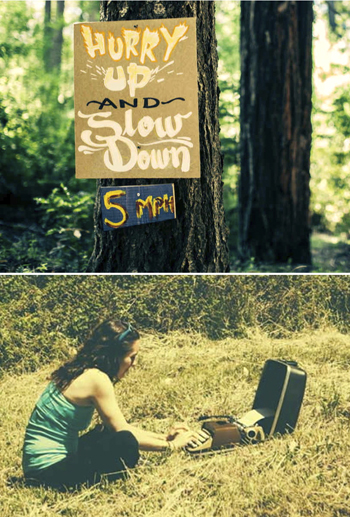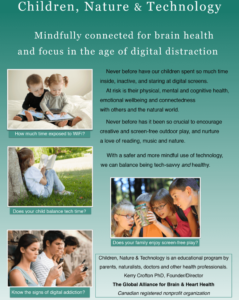[Lowenthal et al. 2007; Infante-Rivard and Deadman, 2003] report that the fetus and young children are at greater risk than are adults from exposure to environmental toxins, like electro-pollution. This is consistent with evidence that the fetus and young child are more vulnerable than older persons are to chemicals [Makri A, et al. 2004] and ionizing radiation [Preston, 2004].
- Birth defects linked to proximity to high voltage power lines. Reprod Toxicol. 1993 May-Jun; 7(3) 283-7. Childhood leukemia is also linked.
- RF exposure (from wireless radiation) and adverse effects on the developing fetal brain. Nakamichi N, Ishioka Y, Hirai T, Ozawa S, Tachibana M, Nakamura N, Takarada T, Yoneda Y. Journal Neuroscience Research, August 2009, Volume 87, Issue 11, Pages 2399–2614
- Bellieni et al [2012] assessed the RF exposure of the 26-week fetus of a pregnant woman using a laptop computer, and found the fetus was adversely affected, as these fields pass directly through the mother’s tissues to the fetus.
- RF exposure and possible promotion of neuronal differentiation in fetal rat brain neural progenitor cells. Nakamichi N, et al. Journal Neuroscience Research 2009, Aug 15;87(11):2406-17.
- Rabbits and rats – with RF exposure – evidence of damage to the fetal brain, eyes, liver and skin. A. Tomruk, Gazi University, Ankara.
- And abnormal changes in different types of fetal brain cells and structure. Prof. Sulleyman Kaplan, Ondokuz Mayis University, Samsun.
- Also biomarkers of genetic and other damage to fetal cells and organs. Prof. Nesrin Seyhan et al. Gazi University.
How much evidence do you need before you protect your baby?
In this book you will read practical information on baby monitors, the best and worst ones, and all you need to know to create a safer environment for your precious babe – before and after the birth.
Parenting Children and Teens
Consider this study by the Swedish oncologist, Professor Lennart Hardell, MD – data from one of the biggest cancer risk studies which shows that:
Children and teenagers are five times more likely to get a certain kind of brain cancer – glioma – if they begin using cell phones before the age of 20. The extra risk from using cordless phones was found to be almost as high.
Professor Olle Johansson of the Karolinska Institute in Stockholm:
“There is clear evidence of harm. I am particularly concerned about children and pregnant women, and teens using mobile phones. Existing safety standards are inadequate and do not consider prolonged exposure.”
As you know, this generation is hard-wired to wireless gadgets. And most have never been prone to accepting adult advice.
When I was buying a pair of shoes the other day, the young sales person was working his cell phone every few minutes. I felt compelled to ask him if he had heard about health hazards. The look he gave me was close to the adolescent eye-roll I get from my own children.
“Not really interested”, he shrugged, “I use this cell phone for everything.”
Young people often sleep with cell phones under the pillow to catch that late-night call, or text message. Maybe this is why many have trouble getting to sleep and getting up for school? Who wants to sleep when you can tweet?
Another concern: while evidence of the link between electro-magnetic radiation (EMR) and autism is still evolving, the experts I consulted praise the benefits of all children spending less electronic time, and more time discovering the simple wonders of nature. Is your son or daughter mostly an ‘inside’, or ‘outside’, child? – see the Digital Detox section.
One of the reasons I wrote this book is so other parents – and grandparents – could benefit, as I have done, by the life-changing advice of prominent experts to ensure the wellbeing of our children and teens in this challenging digital age. And a communication expert explains the best way to get through to your eye-rolling teen.
As you may have seen, you can order a copy through this site, and if you or your loved ones no longer read paper books, there’s an ebook option.
Digital Detox and Tech-Free Times
Many parents think carrying a cell phone keeps their kids safer. Consider the adverse health and behavioural effects, including digital addiction. Good news: there are easy solutions and a new wave of “disconnecting to reconnect.”
We offer Tech-free Retreats And The Mindful EYE Contemplative Photography (use digital cameras with no WiFi)
No digital communication devices or the usual array of electronic gadgets here. Just fun and games and being outside. Wilderness experts, spirited camp leaders and guest instructors provide a ‘back-to-the-earth’ retreat – for all ages. This is fun and a great way to break free of those all-consuming screen fixations and to reconnect. Reconnect with each other – without Facebook – face to face. Remember that? Reconnect with ourselves, and reconnect with the love of nature.
Learn new things: The Mindful EYE contemplative photography, Simplicity mindfulness meditation (Zen at a Glance) to quieten the most jazzed-up mind, flower arranging with sprigs and weeds you gather, yoga, Tai Chi and Qi Gong. The benefits with these practices are numerous, in this context they help us reconnect with ourselves, ease the stress in our bodies, clear the clutter from our minds and release the stale breath from our lungs, as well as focus the mind. You can sketch, journal, wander in the woods, watch birds, explore the inter-tidal zone. This does wonders to de-stress, and to enhance your state of mind, social interactions and relationships. Then for re-entry to the digital world, we look at safer-tech solutions and how to maintain this health and balance back home – back on-the-grid; connected and still on track. (More details on this workshop and webinars at www.theMindfulEYE.org)
And we also recommend Camp Grounded. I met a ‘back-to-the-land’ team on our wavelength at Wisdom 2.0 in San Francisco: a young man caught my attention – typing on his manual typewriter and offering hand-written haiku. Levi Felix leads digital detox retreats and hosts cell phone-free parties with his partner, Brooke Dean. Want to unplug and have fun like you used to? Check out their retreats and Camp Grounded.org – Summer Camp for Adults. May see you there.
Excerpt from Digital Detox:
Disconnect from technology and reconnect with yourself. Recharge your mind, body and soul.
While detaching from our devices and disconnecting from the over-stimulation of social media, step back into the natural rhythm of life – rediscovering what living in the moment truly feels like. We all know that our minds need time and space for reflection, however it is incredibly hard to find or create that time between meetings, podcasts and text messages to do so. Once given that space, the brain will begin to once again think in truly novel and surprising ways, allowing and forcing the individual to take stock in one’s life situation, evaluate personal relationships, think about long-term goals that may have been put on the back burner, or to even ponder the often evasive big picture questions of life that the stimulation of a technological life can seem to have the ability to override. Feeling rejuvenated and truly relaxed after a few days off the grid, participants return to daily life with new found energy, creative inspiration, and a refreshed approach to a balanced life in the digital age.
Our contributing experts address this issue and offer their research and recommendations on many related topics here including how digital addiction affects the brain, what you need to know about young people and gaming; teens and the Internet; and why texting is better than talking, but still not safe. There is also a section on ‘inside’ children and how families have reconnected with each other, and with nature.
Symptoms and Conditions
Many readers report sleeping better and other improvements. Our medical team discusses cancer, electro-sensitivity, autism, vertigo, tinnitus, Parkinson’s, cognitive impairment and Alzheimer’s. And hear what our cardiologist and neurosurgeons have to say.
Electro-sensitivity (ES) – a new medical condition
This is a phenomenon in which individuals experience recurring health effects which flare up while, or just after, they are exposed to electro-magnetic radiation. In Sweden, ES is officially recognized as a disability, so employers and building owners are expected to try to rectify the problems and sufferers may be entitled to disability benefits. While ES is not an accepted medical diagnosis yet, the Canadian Human Rights Commission recognizes it as an environmental sensitivity and classes it as a disability.
The environmental medicine specialist Hans Scheiner, MD treated thousands of people with ES and warned the number of people affected was on the rise and with increased severity:
“Some people are electro-allergic – not only sensitive but hyper-sensitive. When they are exposed they have headaches, sleeping problems, exhaustion during the day, dizziness, vomiting, tachycardia, concentration and memory problems. They may faint or their vision might be impaired. It’s likely these are signs of opening of the blood-brain barrier. Doctors often tell them their symptoms are psychological.”
In the book you will find the latest information on ES, and many other symptoms and conditions that may be related to exposure of wired and wireless electronics. You will get useful information in the detailed self-assessment quiz and see how to ‘connect the dots’ with your headaches, dizzy spells, skin rashes, ringing in the ears etc. There are also easy-to-use, and affordable, strategies to reduce your exposure and bring effective and long-lasting relief – non-invasive and non-pharmacologic – to many symptoms.
Hidden Health Hazards
‘Always-on’ Internet glasses are the latest in high-tech cool. But are they safe? And using an ear piece/headset to reduce brain cancer risks can increase exposure. And there’s another unwelcome surprise.
You may have been wary of cell phones but did you know about the health hazards of cordless phones? These conveniences emit high levels of radiation, particularly the newer ones, even when not in use.
Did you know that multiple cordless phone sets that come with a base station, and a charger for each handset, emit two kinds of radiation? The main base station of a cordless phone, however, is the more dangerous, as the antenna radiates microwaves continually for hundreds of feet/meters. Microwave radiation is also coming from the handset antenna. This is why all the experts urge us not to allow young children near cordless phones. Replacing them should be a key factor in your Action Plan.
From a January 2006 report by the German Federal Agency For Radiation Protection, The Radiation Source at Home – cordless phones radiate unnecessarily:
“A cordless phone (of DECT standard – 5.8 GHz or DECT 6.0) is often the strongest source of high frequency electromagnetic radiation in a private home. To renounce your cordless phone as a precautionary measure will contribute to minimizing your family’s radiation exposure.”
Throughout the book, there is more evidence of harm from cordless phones and recommendations on the best, and worst, models and the safer-tech solutions.
Mindfulness in the Digital Age
You may be shocked when you hear about the radiation from these Wi-Fi tablets. Of course, all students now need to be tech-savvy and with our safer-tech solutions they can be that – and healthy. We need to be aware of the adverse behavioural and health effects, especially young people. The mindful use of technology is one focus of this book.
Mindfulness is a life-enhancing skill that benefits us all.
What’s wrong with this picture?
It has never been easy to tame and focus the mind. In this digital age of distraction, it is truly a challenge, and some approaches are more effective and easier.
Calming the Scattered Mind with Mindfulness Meditation
Interestingly, in Japan, one of the most frenetic cultures on this planet, many people still seek out the quiet contemplative environment of Zen meditation. Nothing religious, just taking time to slow down, and tune in.
I have studied meditation, flower arranging and Tea Ceremony for many years – an accomplishment for a go-getter. When I had a clinical practice and taught people progressive relaxation, I used to combine this with simple breath meditation. This was before we were so crazed and dazed by technology, so it is even more useful now to pull ourselves away from the screen, power off, and sit quietly for a few moments.
Dr. Jon Kabat-Zinn is founder of the Stress Reduction Clinic at the University of Massachusetts Medical Centre. Dr. Kabat-Zinn describes what it is like to have a meditation practice:
“…by making some time for this each day doesn’t mean that you won’t be able to think any more, or that you can’t run around, or get things done. It means that you are more likely to know what you are doing because you have stopped for awhile and watched, listened, understood.”
How to practice mindfulness mediation is detailed in the book.
Healthy Aging
Life Expectancy for This Digital Generation?
EMR exposure ages us at a cellular level and causes DNA damage, inflammation and free radicals accelerating the aging process – even the skin. This is the new factor in anti-aging, and risk reduction also benefits the heart and brain.
In our Wi-Fi world, at what age should we start healthy aging strategies, and see that reducing EMR exposure is essential to longevity? We hear predictions of children born today living way past 100. I wonder. With more than four billion people using mobiles, the global fallout could be that young people, and the rest of us, will face related adverse health effects: cancer, cardiac symptoms, neurological and other diseases. Already some countries are reporting an increase in brain tumors and clusters of childhood cancers in close proximity to power lines and cell towers. What will happen when we are all living in close proximity? What kind of world will it be for our grandchildren? What kind of nature-deprived children are we leaving for our world?
I’d like to ask Dan Buettner, author of The Blue Zones, and his globe-wandering team, to consider reducing EMR exposure as the new longevity factor and one of their ‘lessons for living longer.’ In his book it was obvious, to me at least, that while not all the long-living ‘Blue Zone’ people were off-the-grid, none of them were living under power lines or near cell towers, nor did they use cell phones, or have much exposure to the wireless radiation that surrounds us all these days.
In this guide, you will discover many anti-aging strategies beginning with the most important: recognizing related symptoms and conditions, reducing exposure and recognizing and enjoying the benefits.








